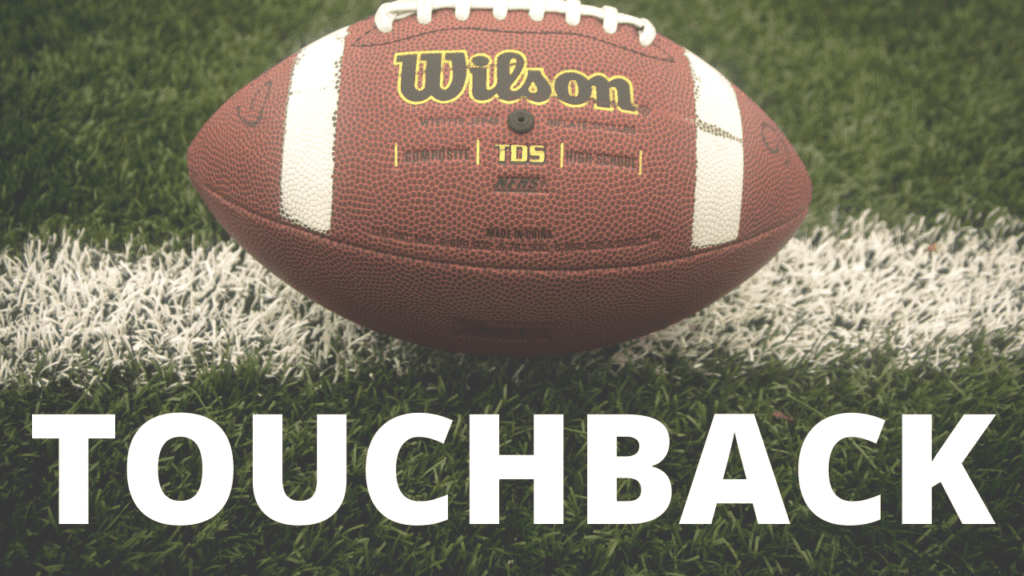In the world of football, terminology plays a crucial role in how fans, players, and analysts interpret the game. Among various terms, "touchback" is one that often leads to confusion, especially among new fans. A touchback occurs in specific situations during the game, and understanding its implications can enhance your viewing experience. This article delves into what a touchback is, how it affects the game, and answers common questions that arise around this important rule.
Touchbacks are more than just a way to restart the game; they are a strategic element that can influence the flow and outcome of a match. Whether it’s a kickoff or a punt, the occurrence of a touchback can lead to varying consequences for both teams involved. The nuances surrounding this term may seem trivial, but they embody essential rules that govern how the game is played. This article aims to clarify what a touchback is, providing insights that will deepen your understanding of football.
As we explore the concept of a touchback, we will answer several questions that frequently arise around this topic. By breaking down the rules and situations in which a touchback occurs, we can provide clarity on why it matters in the context of a football game. So, whether you’re an aspiring player, a seasoned fan, or someone who just tuned in for the Super Bowl, this article will equip you with the knowledge you need to understand this pivotal aspect of football.
What Exactly is a Touchback?
A touchback is a ruling in football that occurs when the ball is kicked into the end zone and is not returned by the receiving team. This can happen during kickoffs or during a punt. When a touchback is called, the ball is placed at the 20-yard line, allowing the receiving team to begin their offensive drive without the risk of a return. This rule serves to protect players from injury, as it discourages risky returns in certain game situations.
When Does a Touchback Occur?
Touchbacks can occur in several scenarios during a football game:
- During a kickoff, if the ball is kicked into the end zone and is not returned.
- On a punt, if the ball lands in the end zone and is not returned.
- If a player catches the ball in the end zone and chooses to kneel instead of advancing the ball.
Why is a Touchback Important in Football?
The significance of a touchback extends beyond merely resetting the play. It can have strategic implications for both teams. For the kicking team, achieving a touchback can prevent the opposing team from gaining advantageous field position. For the receiving team, starting from the 20-yard line offers a fresh opportunity to advance the ball without the risk of losing yardage due to a return.
How Does a Touchback Affect Team Strategy?
Team strategy can be highly influenced by the occurrence of touchbacks. Coaches often plan their kickoffs and punts with touchbacks in mind, emphasizing the importance of field position. The decision to kick the ball deep into the end zone or to place it strategically within the returnable range can be a game-changer.
How Has the Touchback Rule Changed Over Time?
The touchback rule has evolved over the years, especially in relation to player safety. In 2016, the NFL moved the touchback spot from the 20-yard line to the 25-yard line following a kickoff. The intent behind this change was to encourage teams to kick the ball into the end zone for touchbacks rather than allowing returns, thereby reducing the risk of injury during those high-impact plays.
Are There Variations of Touchbacks in Different Leagues?
While the concept of a touchback is consistent across various football leagues, the specific rules can differ. In college football, for instance, the touchback spot is also at the 25-yard line, similar to the NFL. However, other leagues may have distinct regulations. It’s essential for fans to familiarize themselves with the rules of the specific league they are following.
Can a Touchback Be Challenged?
Unlike many other plays in football, touchbacks are not typically subject to review or challenge. The call made by the officiating crew on the field is usually final, unless there is a clear error in the application of the rules. This lack of review is largely due to the nature of the play, which is straightforward and does not generally involve ambiguity.
What Do Players Think About Touchbacks?
Players have varying opinions on touchbacks. Some appreciate the safety aspect, as it reduces the risk of injury during high-speed collisions. Others, particularly kick return specialists, may express frustration, as touchbacks limit their opportunities to showcase their skills. Overall, the perspective on touchbacks can depend on the player’s position and role on the team.
Conclusion: Why Understanding Touchbacks Matters
Understanding what a touchback is and its implications can greatly enhance your appreciation of football. This seemingly simple term encapsulates a wealth of strategic considerations and player safety measures that are vital to the game. Whether you’re watching a casual Sunday game or the intense atmosphere of a playoff match, being informed about touchbacks allows you to engage with the sport at a deeper level. So, the next time you hear the term "touchback," you’ll recognize its importance in the grand scheme of football.
You Might Also Like
Discovering The Sweet And Spicy Delight Of Hot Honey Pizza HutUnderstanding The Phrase "How Do You Do Fellow Kids"
Exploring The Nostalgia Of The Friends TV Show Tag
Unraveling The Mystery: Did Chase And Kelsea Break Up?
Chelsea F.C. Vs Servette FC Lineups: Who Will Shine On The Pitch?
Article Recommendations
- Presidents Salary Today
- Selin Id Spiderman
- Eric Cowell
- If A President Dies In Office The Vice President
- Kento Yamazaki
- Megyn Kelly Net Worth
- Eric And Lara Trump Net Worth
- Gal Gadot Diddy
- Political Party Of The Presidents
- Jyoti Amge Relationships


